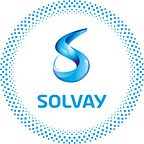Feed me! Helping farmers grow crops while saving the environment
Farmers worldwide rely on fertilizers to stimulate plant growth and feed growing populations. Unfortunately though, agronomy is not as simple as sprinkling a few drops of nutrients on a plant bed…
The most important nutrient is nitrogen. The amount of nitrogen that is supplied to a crop is critical to its quality and growth. However, only a fraction of the nitrogen applied in the field is absorbed by the plants.
Let’s take the example of urea, the most widely used nitrogen fertilizer, which has grown extensively since the 1950s to satisfy the world’s increasing need for food. Thirty percent or more of the applied urea is lost as ammonia gas, which results in decreased nitrogen use efficiency and also poses an environmental risk as ammonia is one of the major pollutants of atmospheric air. Indeed urea is hydrolyzed, by urease enzymes present in the soil, to ammonia, which is vaporised to the atmosphere. And the loss is even more severe under dry weather conditions.
“From an agronomic, economic and an environmental point of view, there is a clear need to improve nitrogen-use efficiency via the use of Enhanced Efficiency Fertilizers (EEF),” explains Krish Shanmuga, Global Technical Director, Fertilizer segment, Novecare Agricultural Specialties. “This is particularly true in light of increasing regulations and restrictions placed on fertilizer usage around the world.”
Solvay’s Novecare business produces nitrogen stabilizers, which are additives that increase plant fertilizer uptake and crop yields. The fertilizer formulations include nitrogen stabilizer additives within a formulation or applied as a coating.
“Nitrogen stabilizers such as urease and nitrification inhibitors help protect a farmer’s investment in nitrogen fertilizers. They increase the amount of time the nitrogen remains in the soil and is available to the plant for absorption,” explains Krish.
They also prohibit nitrification, the biological process of transforming ammonium-N to nitrate-N, which can leach into the soil and contaminate nearby waterways. Nitrate can also be released into the air as N2O (nitrous oxide), a greenhouse gas with 300 times more global warming potential than CO2.
“To be fair, there are a number of urease and nitrification inhibitors on the market, but few have proven their performance,” explains Krish. “Solvay’s formulations are gaining recognition as being more stable, easier to apply, non-caking, quick drying and safe for our customers, for the growers, for consumers and for the environment.”
AgRho® N-Protect™ is a family of eco-friendly nitrogen stabilizers developed through Solvay’s Sustainable Portfolio Management (SPM) methodology, which explores potential risks and opportunities in both the manufacturing process and the marketplace. The methodology identifies key features of the footprint of a product, including CO2 emissions, consumption of nonrenewable resources, impact on human health and ecosystem quality, as well as the water footprint, and concludes with recommendations to make the solution more environmentally friendly. AgRho® N-Protect™ thus leverages Solvay’s expertise in green solvent technology and agrochemical formulations, delivering a load capacity of up to 50% of nitrogen stabilizer in a non-toxic solvent formulation. For farmers and society, that’s good news to feast on…
Originally published at www.solvay.com.
